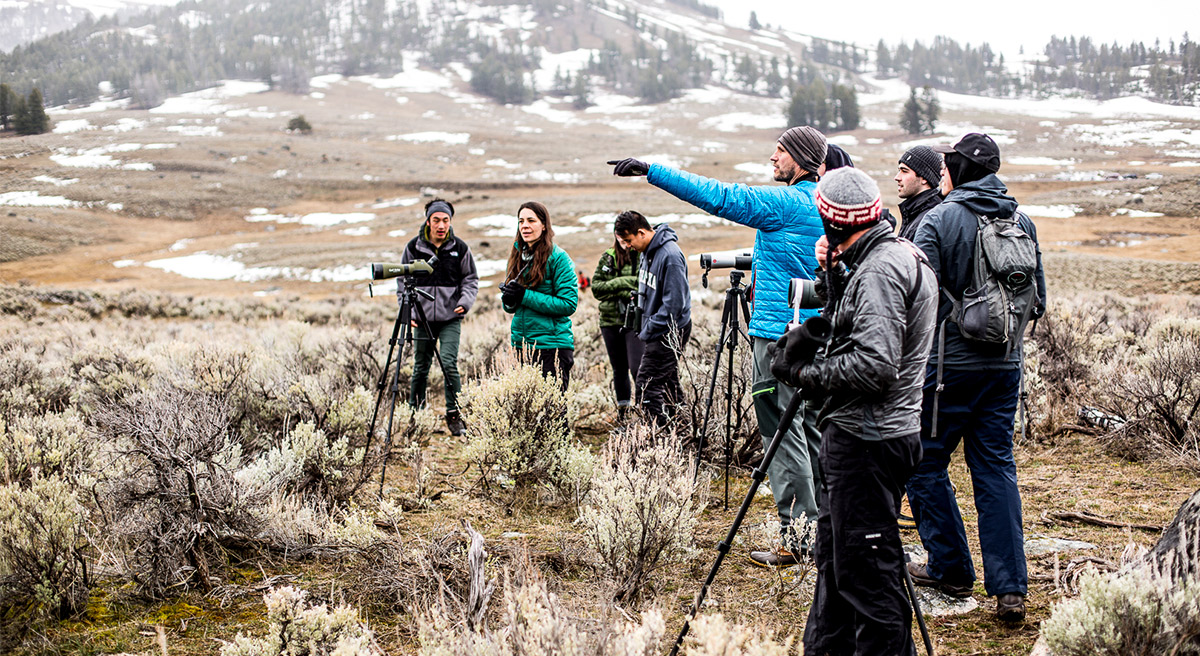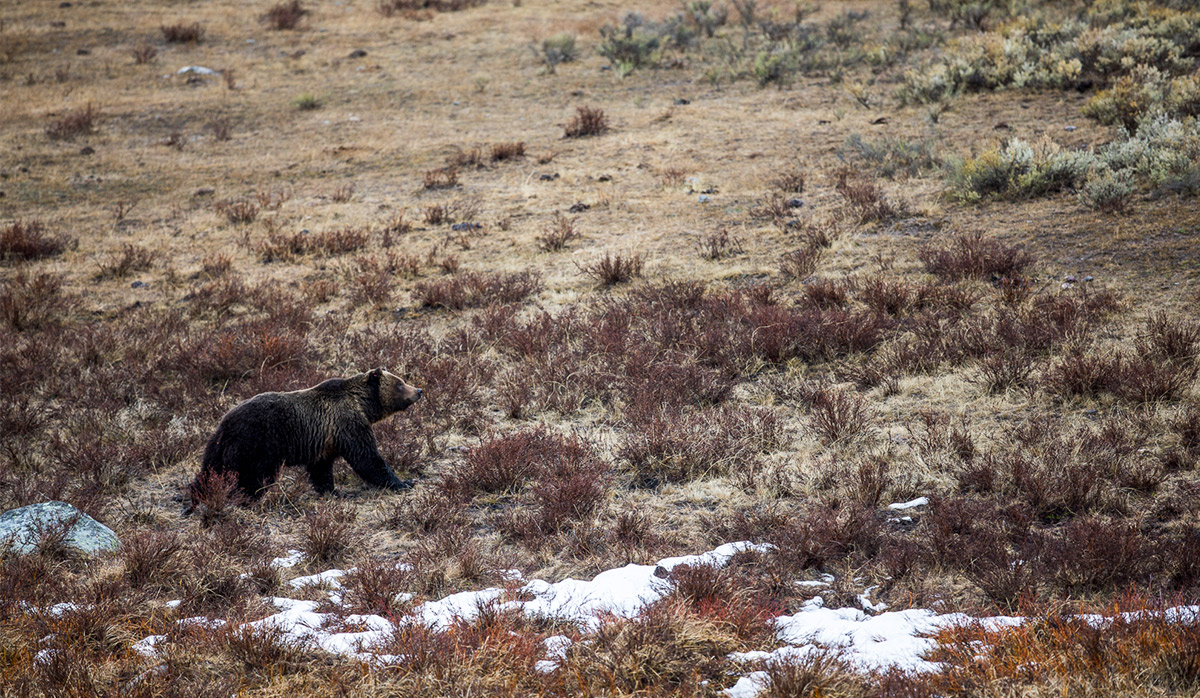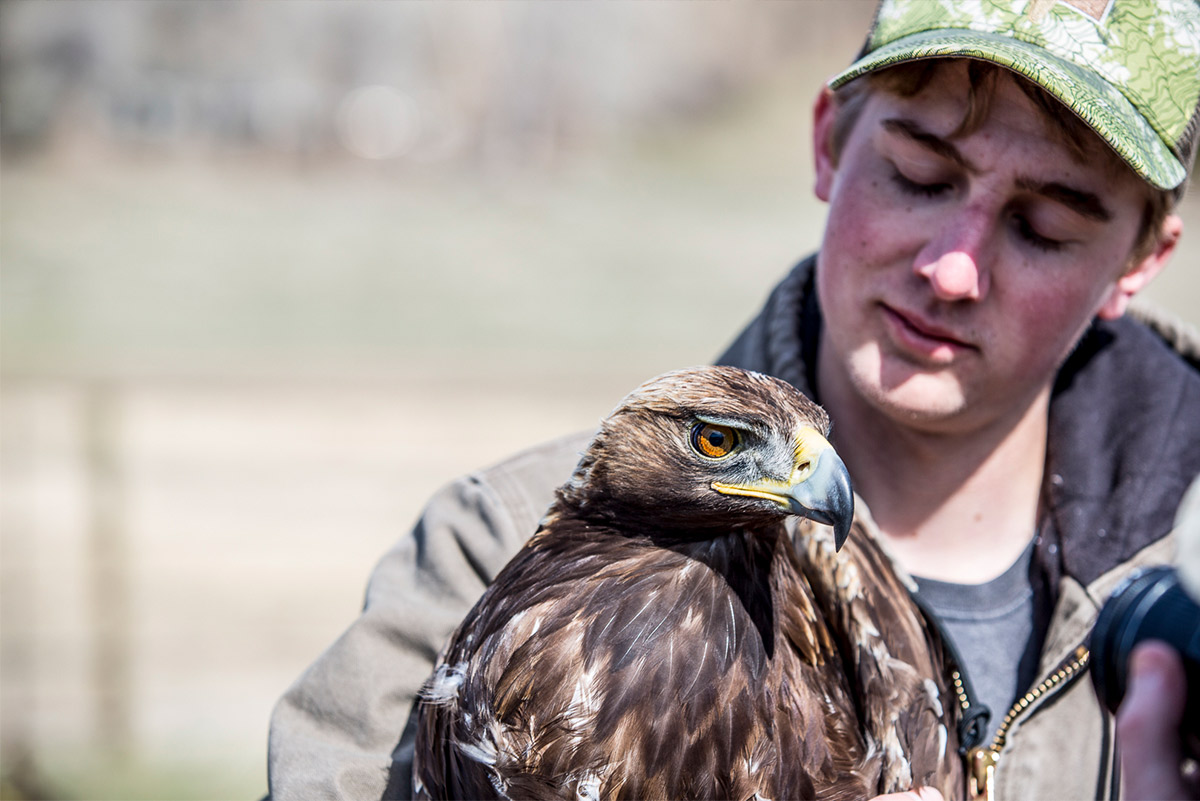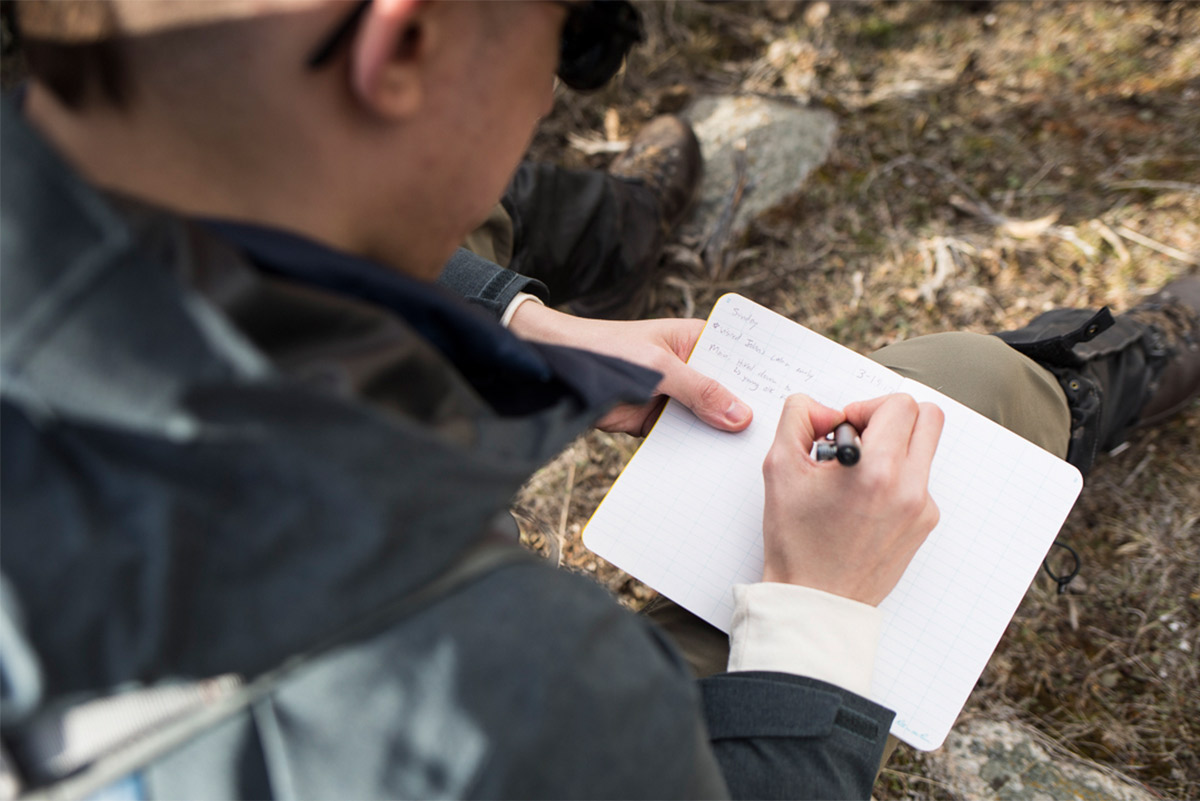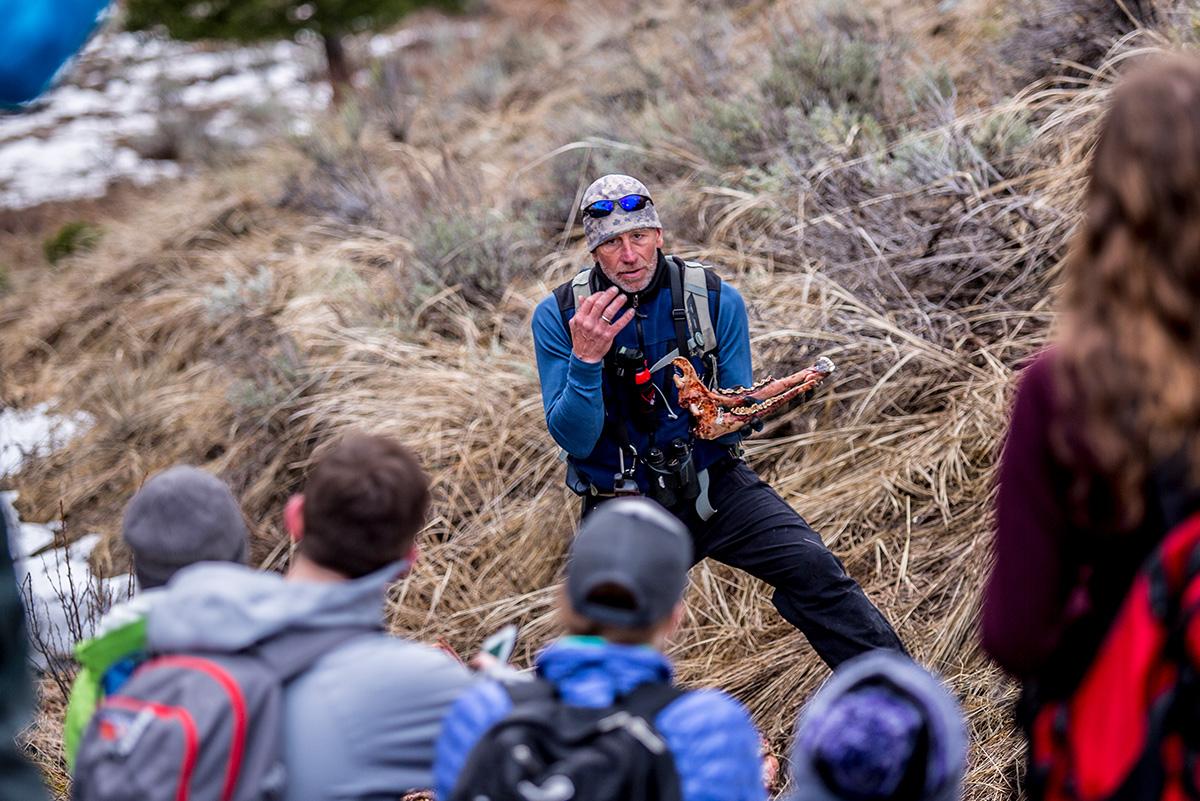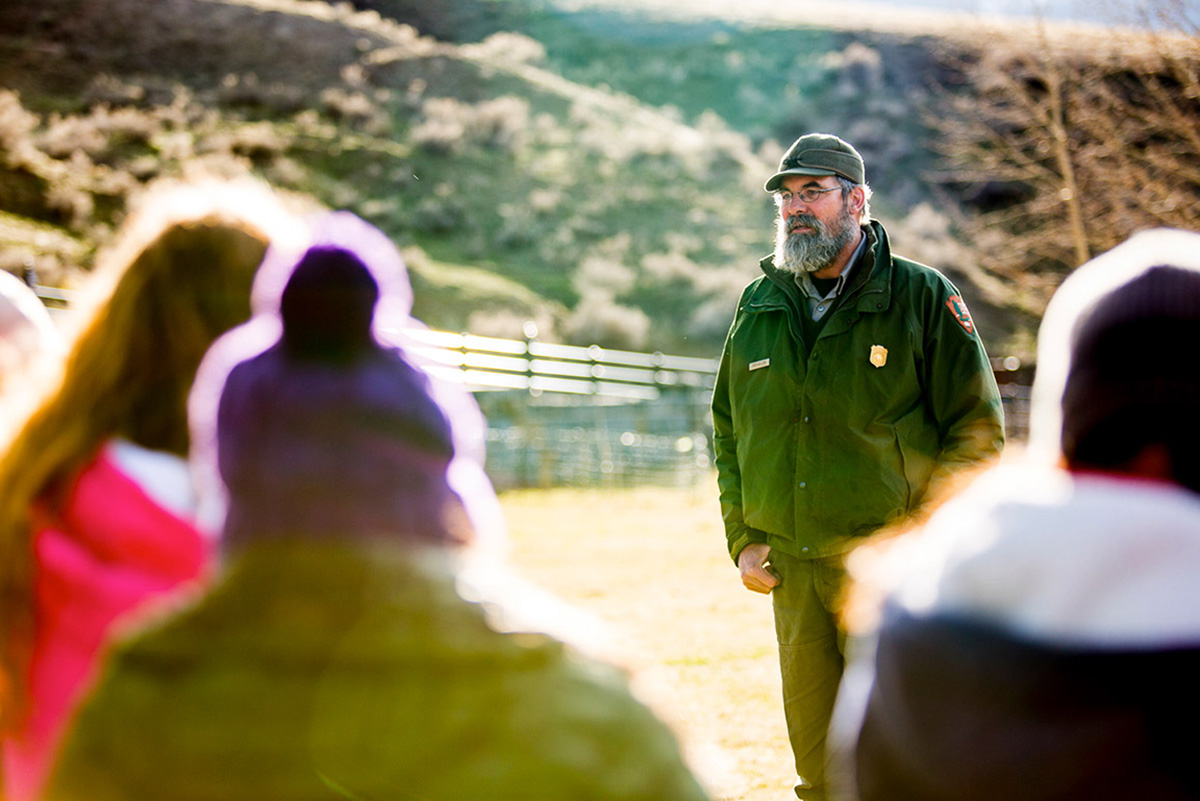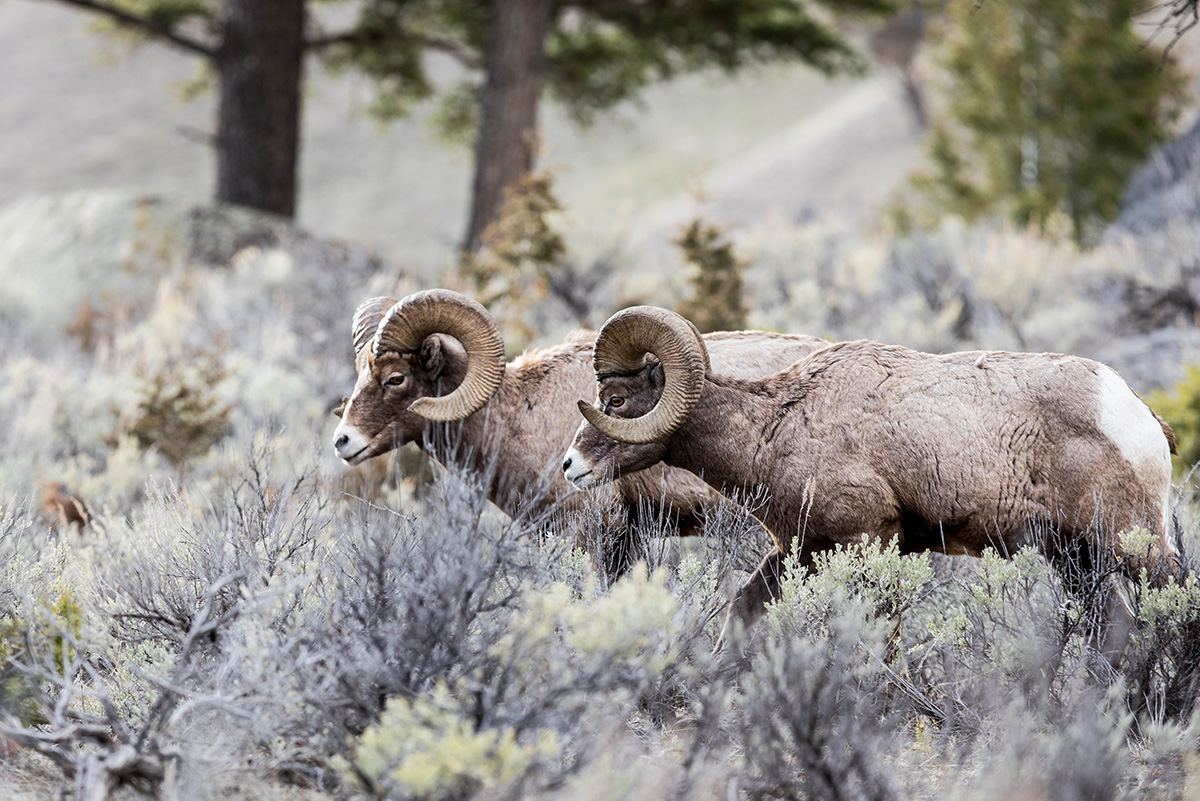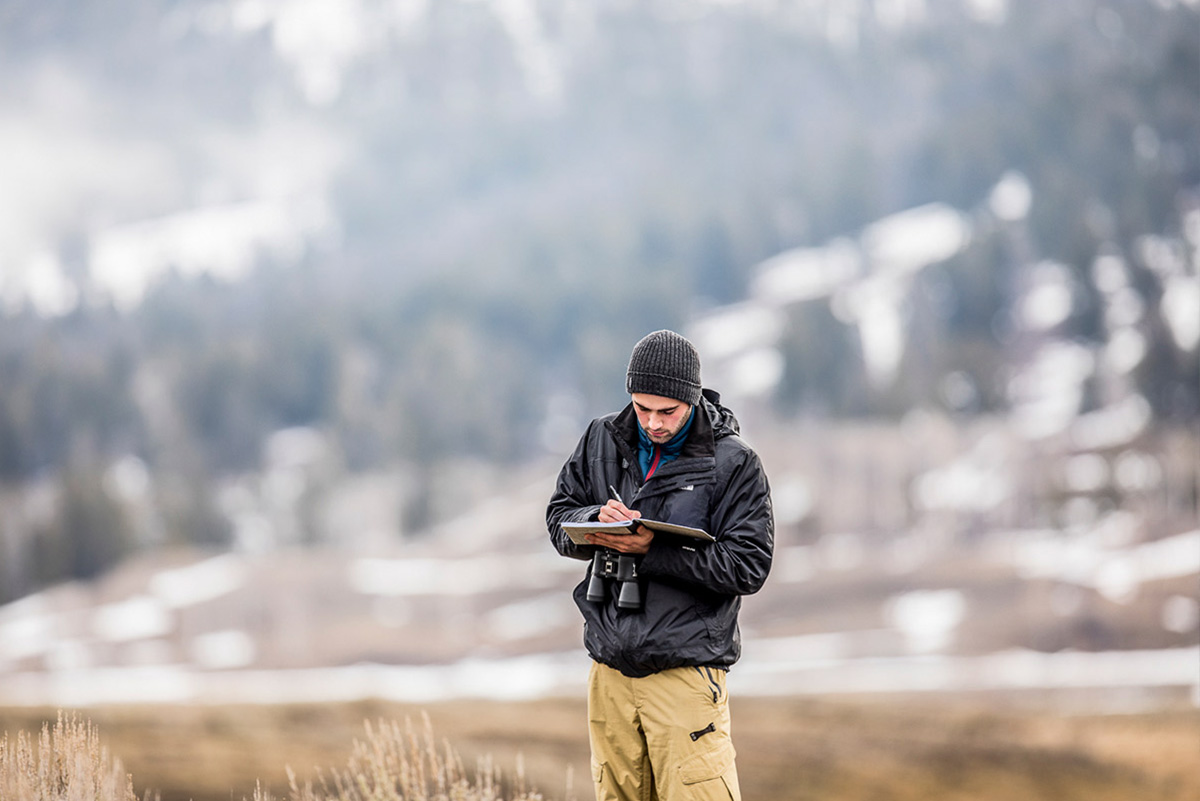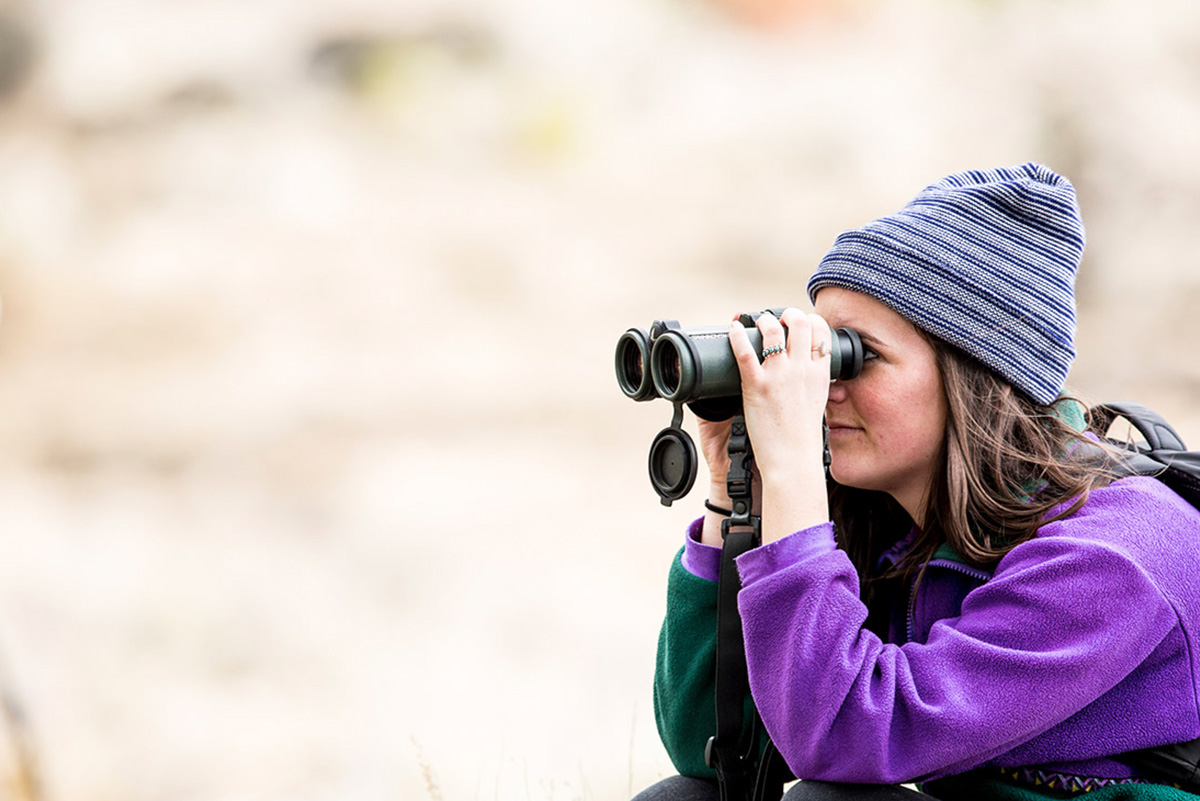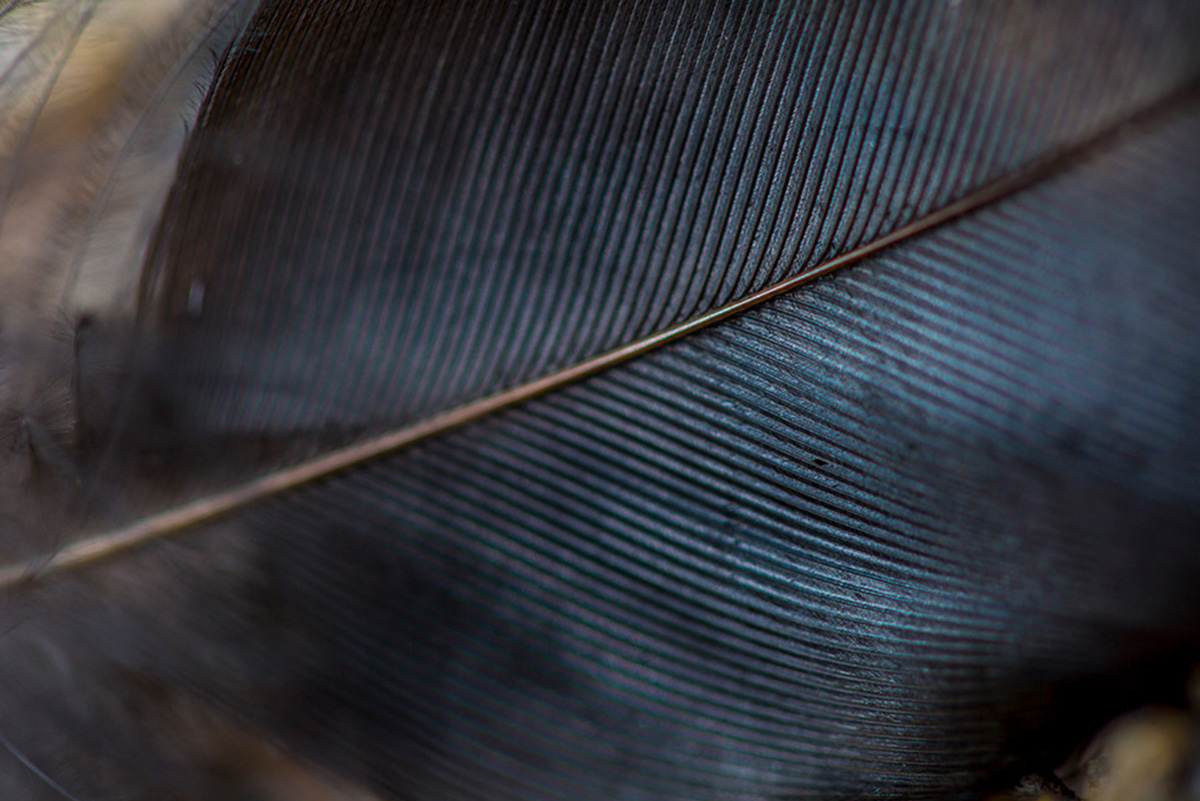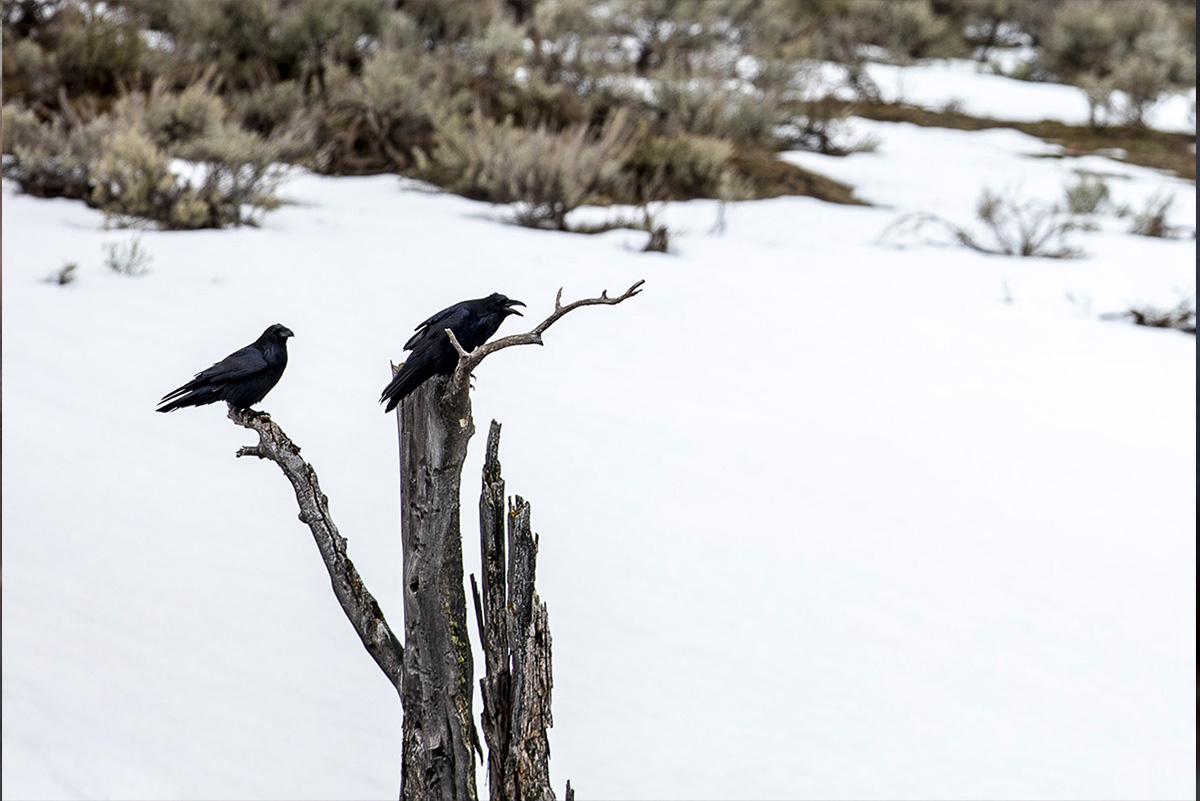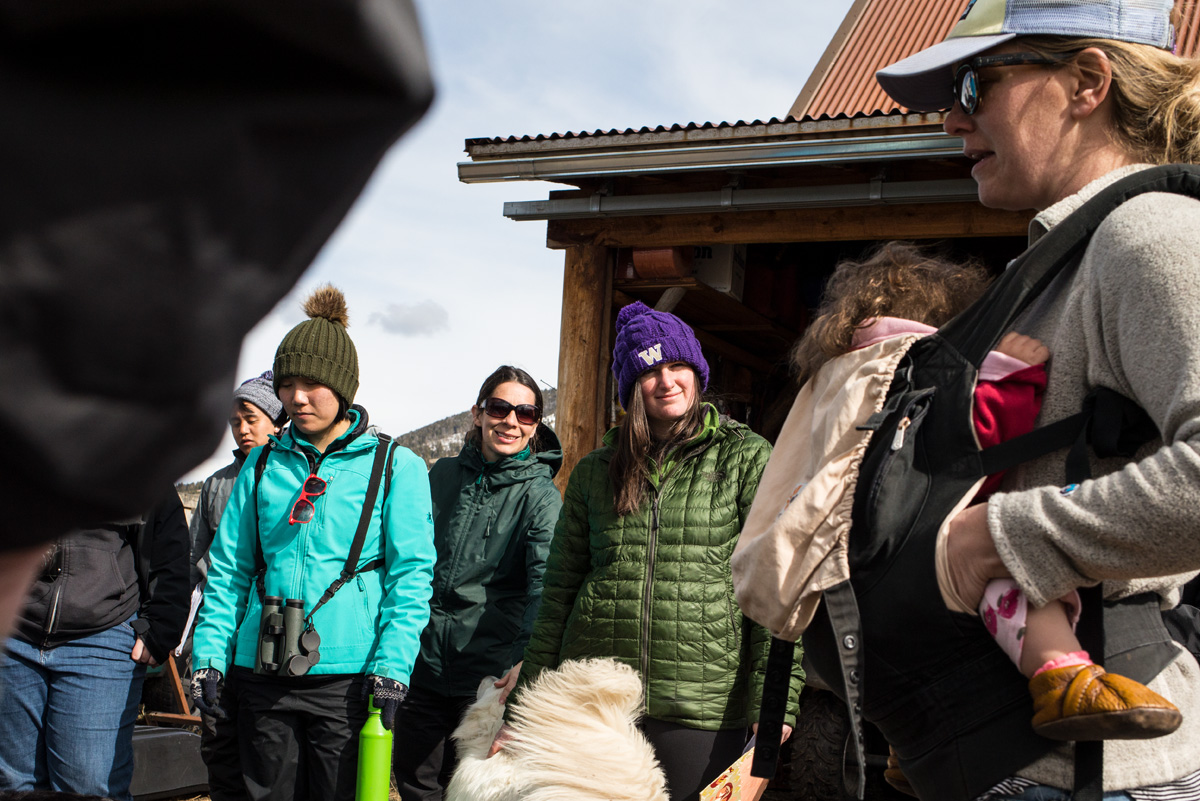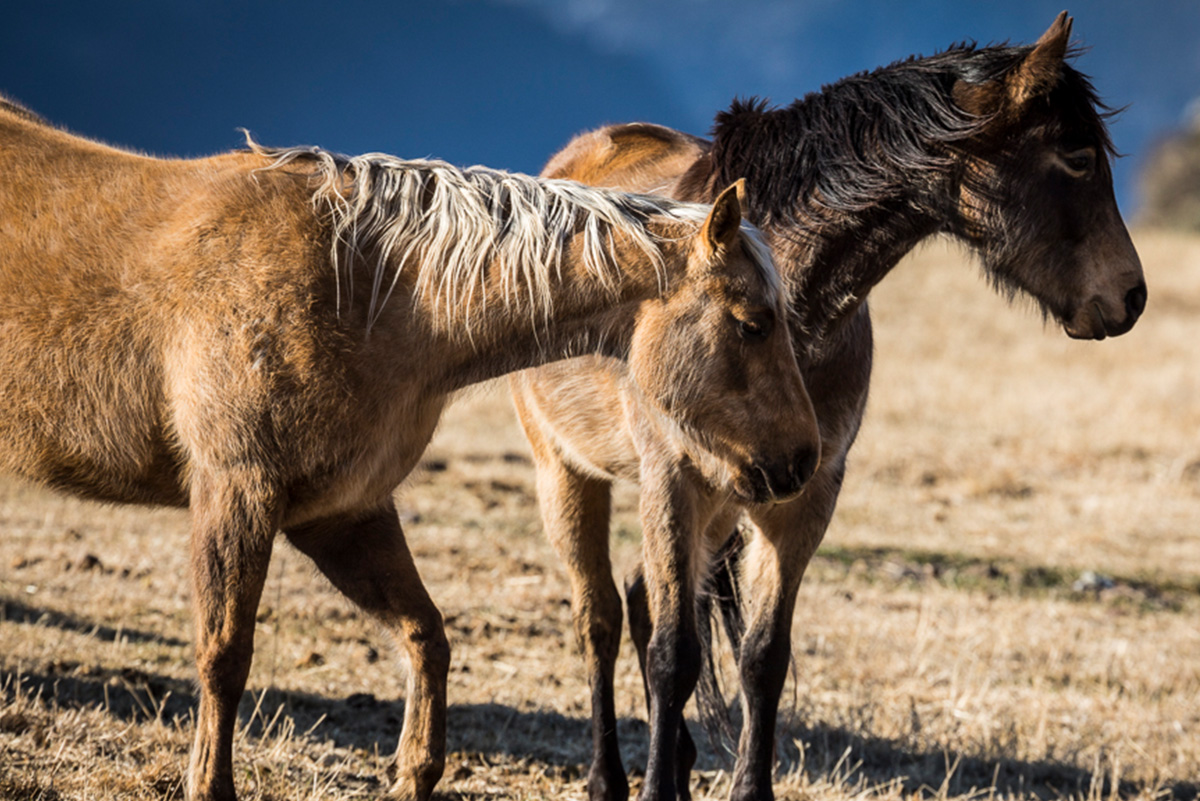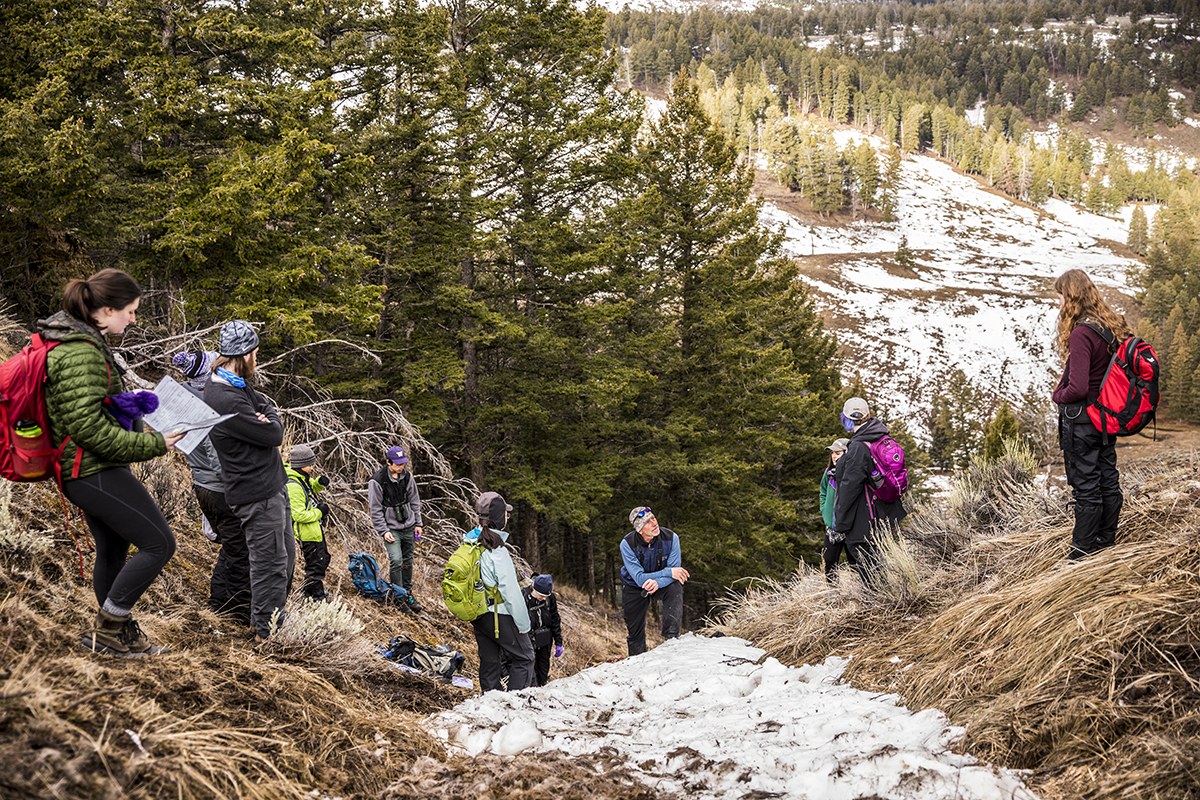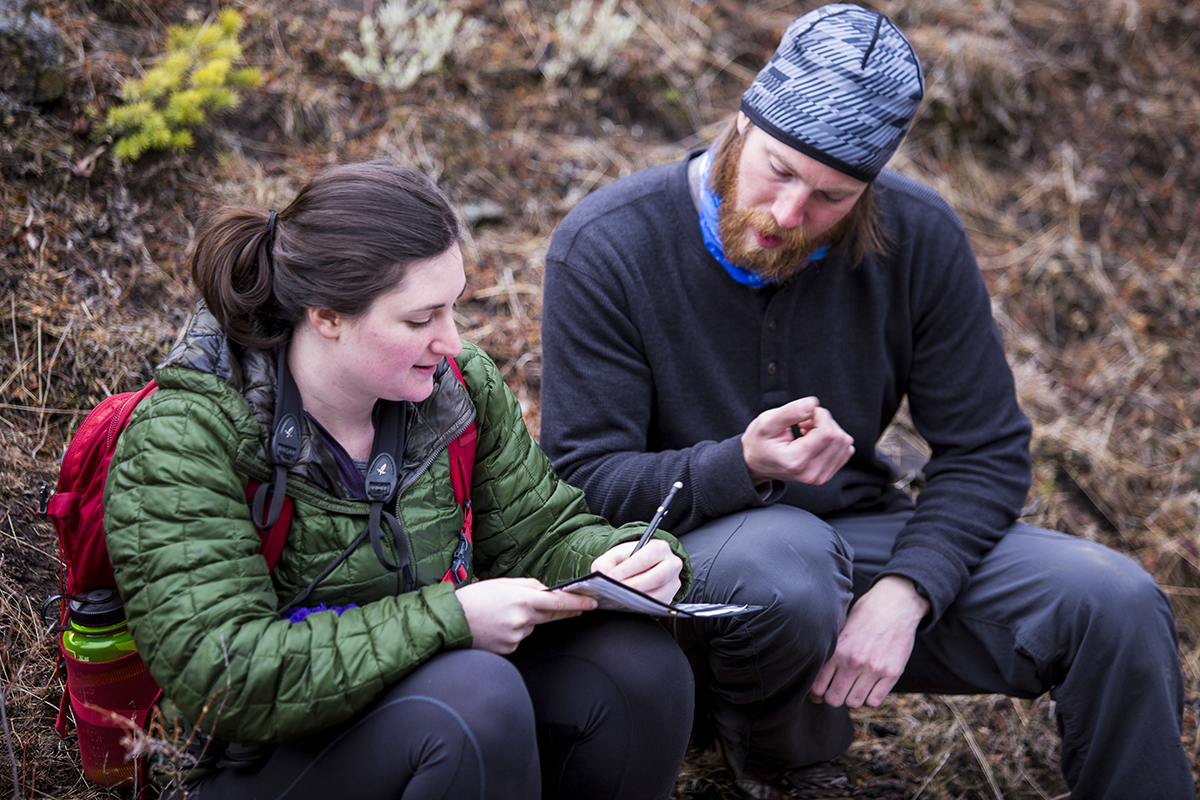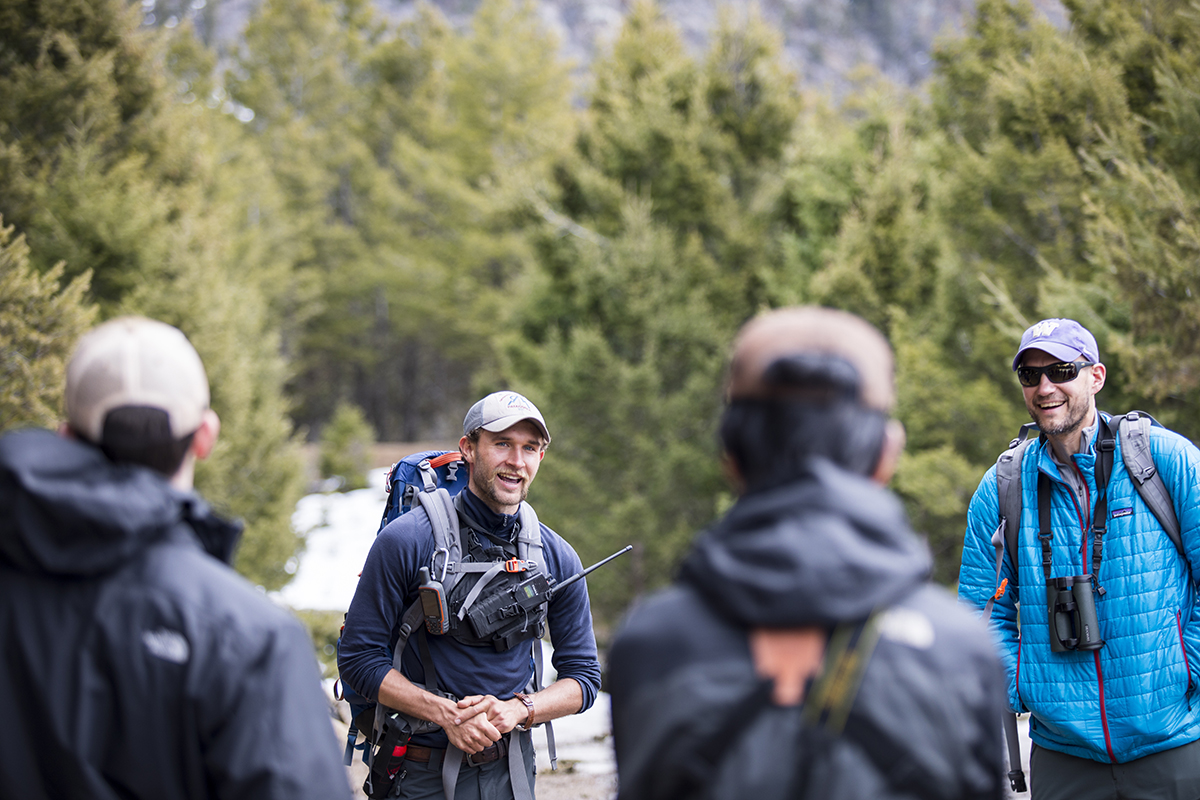The experience begins
Experience Yellowstone
Yellowstone hosts a complex ecosystem of predators, prey, scavengers and people — those who work with animals inside the park, as well as ranchers and others operating just outside its borders. See what the UW students saw, hear what they heard and learn what they learned about wildlife management in Yellowstone. Click on any section to start exploring.

Predators
Predators
Predators // The student experience
“ To actually go there and get a sense of where a cougar hunts helps you understand how they interact with their environment.”
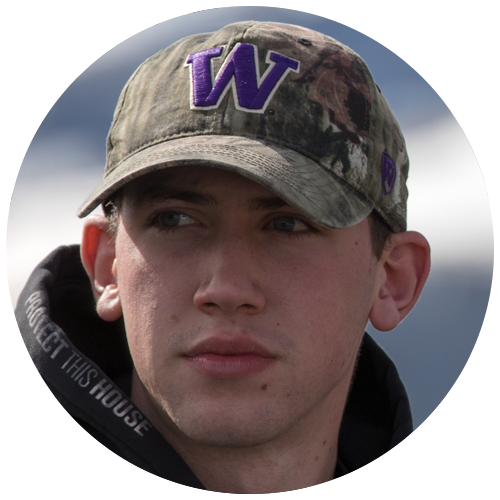
Matthew Malone, ’18 Environmental Science and Terrestrial Resource Management

Predators // Lecture in the field
“ The most common cause of death for adult wolves in Yellowstone is fighting to protect your family and your territory from a rival pack.”
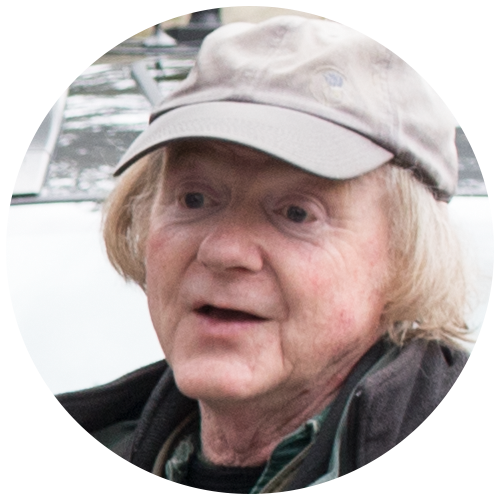
Rick McIntyre, Wolf Interpreter, Yellowstone National Park
0:29 / play lesson
There was a British anthropologist who once said that there’s no two species on earth that are so similar in social behavior as wolves and humans. For example, we found here that the most common cause of death for adult wolves in Yellowstone — since we don’t have any human hunting or trapping — the most common cause of death is to die fighting to protect your family and your territory from a rival pack.

Prey
Prey
Prey // The student experience
Student’s-eye view: a morning drive; a talk about what animals to look for; exploring the surroundings for elk, bison, wolves and more.
“ The conditions weren’t perfect for the elk survey. It wasn’t nice out and it wasn’t easy, but it was something I was really happy doing.”
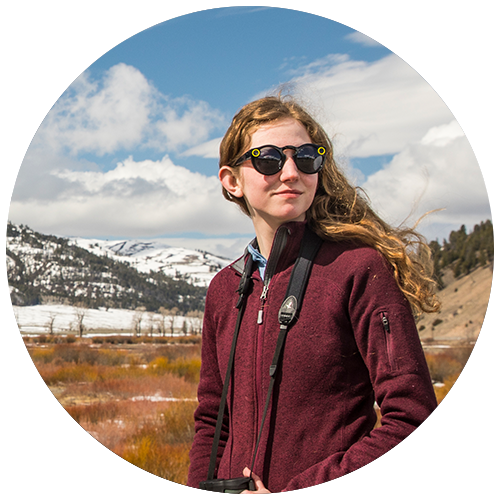
Hannah Booth, ’18 Environmental Science and Terrestrial Resource Management

Prey // Lecture in the field
“ Animals that are in really good condition have the luxury of not having to feed so much, so they can actually be quite vigilant.”
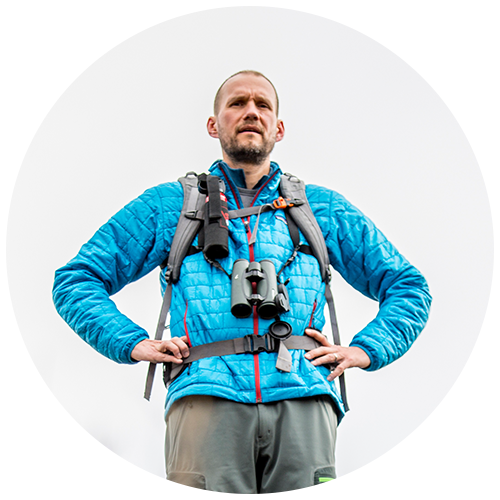
Aaron Wirsing, Associate Professor of Environmental and Forest Sciences, University of Washington
0:21 / play lesson
Animals that are in really good condition have the luxury of not having to feed so much, so they can actually be quite vigilant — whereas animals that are emaciated and desperate tend to have to focus all their time eating and not looking for predators. So, simply put, if you can see the ribs, and you can see the parts of the backbone and the hip bone sticking out, that animal’s not doing very well.

Scavengers
Scavengers
Scavengers // The student experience
Student’s-eye view: Slogs through mud and slush are rewarded with a picnic. A curious — and extremely intelligent — raven lingers nearby.
“ When we were watching the bears at the bison carcass at Blacktail Pond, there were also a lot of ravens, and John Marzluff told us all about their different social behaviors and interactions.”
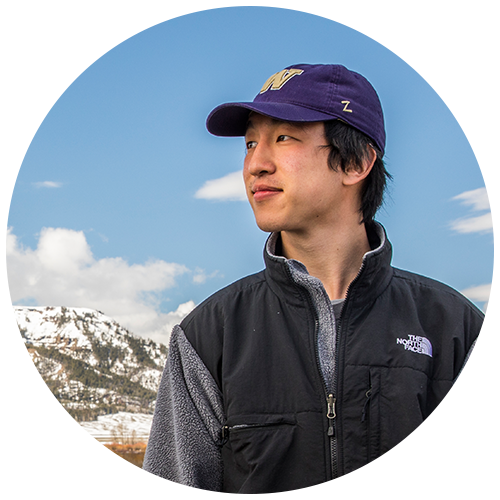
Andrew Wang, ’17 Environmental Science and Terrestrial Resource Management

Scavengers // Lecture in the field
“ Rather than risk your life killing a bison, they wait for a carcass to show up — especially this time of year.”
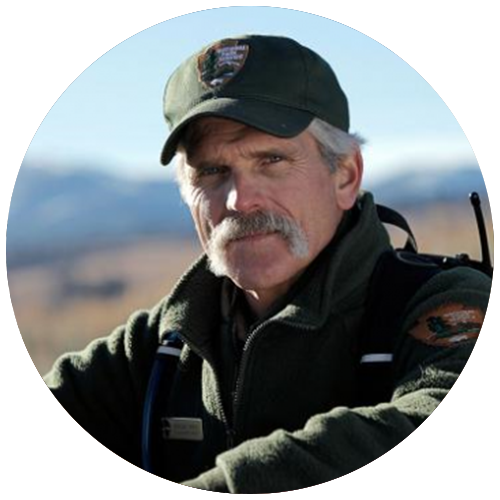
Doug Smith, Wolf Biologist, Yellowstone National Park
0:21 / play lesson
A quarter to a third of all bison consumption by wolves is carcasses. And so rather than risk your life killing a bison, they wait for a carcass to show up — especially this time of year, especially during the rut. So this could be a huge subsidy for wolves and could be important in the impact of wolves on elk.

Neighbors
Neighbors
Neighbors // The student experience
“ Going to Yellowstone with wildlife biologists is like going behind the scenes of a play.”
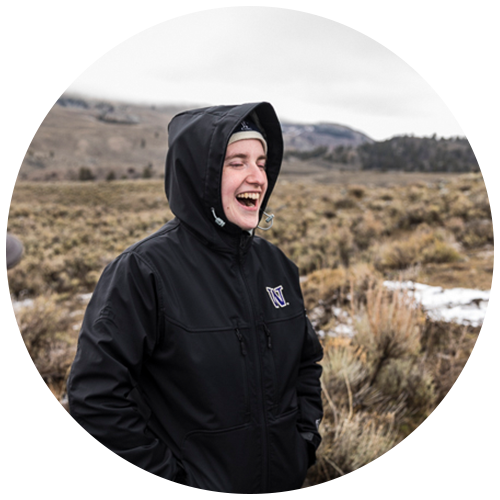
Nikki Furner, ’18 Environmental Science and Terrestrial Resource Management

Neighbors // Lecture in the field
“ Here at Yellowstone, we try to do a census of the bison population every year.”
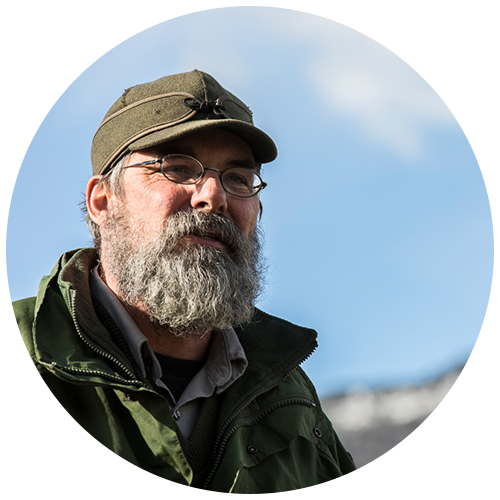
Rick Wallen, Bison Biologist, Yellowstone National Park
0:36 / play lesson
Us humans in the United States do a census every 10 years of the population. Well here at Yellowstone we try and do a census of the bison population every year. So I will have my team for about two weeks go out in pairs, and split up, and classify every single group that we can find on the landscape. The way we do that is we put a couple people in the airplane on Sunday or Monday and we fly around, and it helps us figure out the distribution of the animals. It helps us organize our daily expeditions to get out in the field and go find all of those groups.
Back to Washington
Yellowstone National Park has long been a bellwether for scientists to study how ecosystems work. Learning about both wildlife and humans there has given students an experience they’ll bring back to their classrooms in Washington — and their careers in the wide landscape beyond.
Read more about who the students met in Yellowstone, the animals they saw and studied, and what they discovered about the challenges and rewards of careers in wildlife management.
What you care about can change the world
The University of Washington is undertaking its most ambitious campaign ever: Be Boundless — For Washington, For the World. When you support immersive learning experiences at the College of the Environment, you can make it possible for students to get hands-on experiences that propel them toward the careers of their dreams.
